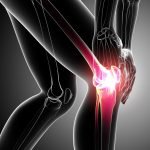Testing Blood Insulin: How This Hormone Shows a Way to Health & Longevity
Richard Maurer, ND
Docere
“What is the single most helpful blood test, beyond what is usually done, that I can ask my doctor to order for me?” I received this question following my recent presentation on blood test results to guide athletes toward better training, diet, and performance. I had lots of material to draw upon – Testosterone for anabolic baseline, Free T3 for peripheral tissue thyroid conversion, and morning cortisol for adrenal response. But he asked for a single test, not a costly panel. “Insulin,” I replied. Here’s why…
I realize insulin resistance seems like yesterday’s news for us natural health providers. In fact, multiple international health organizations have been arguing about the definition of metabolic syndrome since 1998.1 But 20 years have passed and the hormone test is still underutilized and only partially understood, even within the functional medicine community. Sensitivity and resistance to this anabolic hormone tells an important story about disease risk, dietary response, metabolic tone, and longevity. That’s a lot of information to attribute to 1 hormone. Furthermore, your fasting glucose and fasting insulin together create a calculation called HOMA-IR [Fasting Insulin x Fasting Glucose, divided by 405]. The acronym HOMA inconsequentially means “Homeostatic Model Assessment; “IR” meaningfully represents “Insulin Resistance.” I believe that a conversation about cancer prevention, cardiovascular protection, and metabolic health cannot occur without an assessment of insulin resistance and a goal toward insulin sensitivity.
Know Your Insulin
Insulin is the primary hormone that responds to what we eat. Insulin is released from the pancreatic beta cells when carbohydrates are ingested, and, to a lesser degree, protein. Insulin is also secreted when the stomach stretches, regardless of food type. Insulin signals for the storage of sugars, and the making and stockpiling of fats. It also assists cellular uptake of amino acids and magnesium. The goal is to refuel and repair. Realize that we do not eat to fuel our future activity; rather, our body uses meals to restore and rebuild from the activity that recently occurred.
Whoa, did you get that? We don’t eat for what is coming; we eat for what we already did. This means that each meal is an opportunity to recover and rebuild so as to better match our activity, environment, and desired metabolic goal. Before we label high insulin as the overweight, type 2 diabetic’s curse, consider that it started as the athlete’s best friend. Here lies a message I find invaluable when treating type 2s who have been told they are broken. Their (my) body is beautifully adapted for strenuous activity and a different recovery meal profile.
Wouldn’t it be nice to know how much insulin different foods triggered in the body? Yes, but researchers remain glued to the Glycemic Index of foods, as attempts to establish a Dietary Insulin Index remain unhelpful, practically and clinically.2 The high glycemic response of bread correlates with high relative insulin secretion; however, pure protein foods like poultry and meats trigger insulin secretion yet have a glycemic index of zero. And human insulin secretion is wildly variable. Even with the best of techniques, IV infusion of glucose, and tight measurement of glucose fluctuations and insulin secretion, the amount of insulin secreted is variable from person to person within the same population, to a factor of at least 7.3 Predicting insulin secretion in the individual with non-insulin-dependent diabetes mellitus (NIDDM) will elude our predictions, I am afraid.
Insulin Measurement
When insulin is measured in a fasting state – with an overnight fast typical of any blood draw that contains glucose and lipid profiles – the test result indicates the body’s baseline resistance or sensitivity to the message of insulin.
Each hormone in the body has 2 sides to its story. One is the crude amount of the hormone secreted, and the second is the responsiveness and resistance of affected body tissues. In the case of insulin, good glucose control and sufficient post-exertional muscle recovery can occur with relatively low levels of insulin. This kind of sensitivity is, in fact, desirable.
Fasting Insulin in Adults
The ranges listed here are quite different than the wide ranges provided by commercial labs. Ranges are detailed and referenced in my book, The Blood Code: Unlock the Secrets of Your Metabolism (2014). The international SI unit conversion is: 1 uIU/mL = 6 pmol/L.4
- Optimal: 3-8 uIU/mL (18-48 pmol/L)
- Low: <3 uIU/mL (<18 pmol/L)
- High: >8 uIU/mL (>48 pmol/L)
Low Insulin
Many labs cannot detect insulin lower than 2 uIU/mL. In such cases the result is reported as “below detectable limits.” If there is no detectable fasting insulin (ie, <2 uIU/mL, or <12 pmol/L) and blood sugar is significantly elevated (eg, HgbA1C >6.4%, or >46 mmol/L), the patient could have type 1 diabetes or Latent Autoimmune Diabetes of Adulthood (LADA) and should be immediately assessed. Besides the condition above, I clinically see low insulin in:
- people with inadequate intake or absorption of calories
- people who over-exercise/over-train without adequate time and food to recover
- people who eat a very-low-carbohydrate diet despite having no prior evident insulin resistance
High Insulin
High insulin on a fasting blood test indicates a chronically anabolic state – effectively storing sugars while building fat and muscle. Practically, high insulin results in central obesity and high blood pressure. High fasting insulin is rare in a thin or frail person. Future risk of type 2 diabetes begins to go up in those with fasting insulin above 8 uIU/mL (48 pmol/L).5 Uncorrected high insulin, the story goes, will cause a boy-who-cried-wolf syndrome, whereby the tissues in the body stop listening to the elevated insulin message and develop “resistance.”
Insulin’s Effects on Health
High insulin is strongly strong linked to heart attack and stroke.6 Elevated fasting insulin is also strongly linked with risk of breast cancer,7 melanoma,8 and colon cancer.9 I could list more nondiabetic conditions associated with high insulin, but I have to stop, and already this list includes the top 5 causes of death in the United States.
Insulin has so many mechanisms to raise heart disease risk, cancer risk, and trigger inflammation. For example, insulin induces sodium retention at the kidney, causing excess fluid retention, which in turn worsens inflammation and raises blood pressure.10 Insulin, as you know, raises the triglycerides (TGs), but it also decreases the size of the LDL-cholesterol particle, to a size more associated with atherosclerosis formation.11 Insulin increases the level of uric acid, causing high blood pressure and gout. Insulin can affect other hormones, as seen in polycystic ovary syndrome (PCOS), where other anabolic hormones follow insulin’s lead.
High insulin is the driving force behind fat deposits in the liver.12 Statistically, over 70% of adults with fatty liver are obese, but clearly many individuals can have fatty liver from high insulin without obesity.13,14
Longevity is associated with people who have lower insulin levels and a low HOMA-IR that reflects insulin sensitivity.15 This compelling research brings into question one of the greatest mistakes of pharmaceutical-based medical care: the treatment of type 2 diabetes with drugs that actually raise insulin.
Insulin Levels During Childhood & Pregnancy
It is normal for growing children and pregnant women to have a slightly higher insulin level, up to 15 uIU/mL (90 pmol/L). Gestational diabetes is not self-limiting; instead, it is the appropriate pregnancy-related elevation of insulin that puts vulnerable women over the top of their previously subclinical, but present, insulin resistance.
Adding Glucose to the Calculation: HOMA-IR
- Optimal range: 1.0 (0.5–1.5)
- Low HOMA-IR (<1.0) represents insulin sensitivity (beneficial). A small amount of insulin is doing the trick to keep blood sugars in balance.
- High HOMA-IR: Above 1.5 indicates early insulin resistance; above 2.0 indicates significant insulin resistance. The higher the number, the more resistance there is to the signaling of insulin. If >2, the right diet and fitness plan can be implemented to move toward insulin sensitivity.16
Insulin Resistance & Thyroid
Insulin resistance and hypothyroidism are intimately connected. Recent research has determined that insulin resistance increases the incidence of thyroid problems.17,18 Ancestrally, the same environmental conditions that favored storing more calories via insulin resistance also beneficially favored spending fewer of those calories with mild hypothyroidism. Thus, many individuals are twice blessed by these metabolic efficiencies. But which came first?
For years, researchers have associated elevated TSH with heart disease risk. People with slightly elevated TSH, even within normal range, appear to have more heart disease and higher body weight than those with a TSH in the lower range of normal. This has, in my opinion, led to an unhealthful trend toward overprescribing thyroid hormone to lower TSH. Since 2010, researchers have more appropriately attributed the heart disease risk and weight problems in those with slightly high TSH to insulin resistance, not a primary thyroid condition.17
Fasting insulin on its own tells an incomplete story. The anabolic message of insulin will encourage a building of the body – desirable muscle for a commanding athlete and tissue fat for a more sedentary person. I measure skin-fold calipers in my office—it is a locational measure of the anabolic fat deposits. [See https://ndnr.com/mens-health/body-fat-in-men-a-measure-of-leanness-and-longevity/] Circulating fat, or triglycerides, is proxy measure as well.
High Triglycerides / Heart Disease / Low HDL-C
Early TG:HDL research was conducted by Gerald Reaven, MD, of Stanford University.19 The TG:HDL ratio is a strong marker for lifestyle factors – perhaps a reason it is ignored in most pharmaceutically oriented medical studies. TGs often elevate in tandem with fatty deposits in the liver; a fattier liver does not as effectively produce healthful HDL-cholesterol. The medical term for this condition of high TGs and lower HDL is diabetic atherogenic dyslipidemia – an intimidating name that I believe poorly reflects how correctible it is using the right diet and exercise.
Treatment in 3 Sentences
Adjust carbohydrate restriction to matches the individual’s level of insulin resistance. Skipping meals or eating 2 meals per day has been shown work better than frequent meals for individuals with insulin resistance and high body fats. Walking is inadequate; exercise should be strenuous, even if only for 10 minutes. Those of us who tend toward insulin resistance need to live as if the world is still the physically demanding place for which our body is so well acclimated.
Case Study
This is a case of high insulin in a non-obese man.
Doug was a 31-year-old man who felt worse after eating. He could not figure out the food trigger but suspected a hidden allergy. Instead, his insulin secretion following the ingestion of breads and grains resulted in a “storage-state-fatigue” – the opposite metabolic state that an athlete wants for performance, ie, one in which calories are freely available.
After the first blood test, he followed a higher-fat, low-carbohydrate diet: <20 g carbs at breakfast, and 20-40 g carbs at lunch and dinner. By 3 months later, he felt the best he had in years. (See Table 1)
Table 1. Blood Test Results
| TEST RESULT | 9/3/15 | 12/4/15 |
| Cholesterol | 192 | 196 |
| Triglycerides (mg/dL) | 189 | 78 |
| Glucose, fasting (mg/dL) | 86 | 85 |
| Insulin, fasting (uIU/mL) | 21 | 7 |
For those interested in the skin-fold measurement outcomes, see the drop in his hip body fat, which correlates with lower insulin levels (Table 2).
Table 2. Skin-Fold Caliper Measurements
| DATE | 9/3/15 | 12/4/15 |
| Triceps | 14 | 14 |
| Biceps | 5 | 5 |
| Back | 20 | 17 |
| Hip/Waist | 25 | 13 |
References:
- Hu G, Qiao Q, Tuomilehto J. The metabolic syndrome and cardiovascular risk. Curr Diabetes Rev.2005;1(2):137-143.
- Brand-Miller J, Foster-Powell K, Holt S. The New Glucose Revolution Complete Guide to Glycemic Index Values. New York, NY: De Capo Press; 2003.
- Clausen JO, Broch-Johnsen K, Ibsen H, et al. Insulin sensitivity index, acute insulin response, and glucose effectiveness in a population-based sample of 380 young healthy Caucasians. J Clin Invest. 1996;98(5):1195-1209.
- Staten MA, Stern MP, Miller WG. et al. Insulin assay standardization: leading to measures of insulin sensitivity and secretion for practical clinical care. Diabetes Care. 2010;33(1):205-206.
- da Silva RC, Miranda WL, Chacra AR, Dib SA. Insulin resistance, beta-cell function, and glucose tolerance in Brazilian adolescents with obesity or risk factors for type 2 diabetes mellitus. J Diabetes Complications. 2007;21(2):84-92.
- Lakka HM, Lakka TA, Tuomilehto J, et al. Hyperinsulinemia and the risk of cardiovascular death and acute coronary and cerebrovascular events in mArch Intern Med. 2000;160(8):1160-1168.
- Gunter MJ, Hoover DR, Yu H, et al. Insulin, insulin-like growth factor-1, and risk of breast cancer in postmenopausal women. J Natl Cancer Inst. 2009;101(1):48-
- Antoniadis AG, Petridou ET, Antonopoulos CN, et al. Insulin resistance in relation to melanoma risk.Melanoma Res. 2011;21(6):541-5
- Giovannucci E. Metabolic syndrome, hyperinsulinemia, and colon cancer: aAm J Clin Nutr. 2007;86(3):s836-s842.
- Rocchini AP, Katch V, Kveselis D, et al. Insulin and renal sodium retention in obese adolescents. Hypertension. 1989;14(4):367-3
- Festa A, D’Agostino R Jr, Mykkänen L, et al. LDL particle size in relation to insulin, proinsulin, and insulin sensitivity. The Insulin Resistance Atherosclerosis Study. Diabetes Care. 1999;22(10):1688-16
- Targher G, Day CP, Bonora E. Risk of cardiovascular disease in patients with nonalcoholic fatty liver disease. N Engl J Med. 2010;363(14):1341-13
- Tock L, Prado WL, Caranti, DA, et al. Nonalcoholic fatty liver disease decrease in obese adolescents after multidisciplinary therapy.Eur J Gastroenterol Hepatol. 2006;18(12):1241-12
- Machado M, Cortez-Pinto H. Non-alcoholic fatty liver disease and insulin resistance. Eur J Gastroenterol Hepatol. 2005;17(8):823-8
- Masternak MM, Panici JA, Bonkowski MS, et al. Insulin sensitivity as a key mediator of growth hormone actions on lJ Gerontol A Biol Sci Med Sci. 2009;64(5):516-521.
- Vogeser M, König D, Frey I, et al. Fasting serum insulin and the homeostasis model of insulin resistance (HOMA-IR) in the monitoring of lifestyle interventions in obese persons. Clin Biochem. 2007;40(13-14):964-968.
- Maratou E, Hadjidakis DJ, Kollias A, et al. Studies of insulin resistance in patients with clinical and subclinical hypothyroidism. Eur J Endocrinol. 2009;160(5):785-7
- Ayturk S, Gursoy A, Kut A, et al. Metabolic syndrome and its components are associated with increased thyroid volume and nodule prevalence in a mild-to-moderate iodine-deficient area. Eur J Endocrinol. 2009;161(4):599-
- Reaven G Strom TK, Fox B. Syndrome X: The Silent Killer; The New Heart Disease Risk. New York, NY: Simon & Schuster; 2001.
Image Copyright: <a href=’https://www.123rf.com/profile_markbz’>markbz / 123RF Stock Photo</a>
 Richard Maurer, ND, demystifies blood test results, body fat measurements and other metrics to reveal the primal diet and fitness needs that correct weight problems, hypothyroid symptoms, prediabetic conditions, and type 2 diabetes. He has practiced integrative naturopathic medicine in Maine since 1994. His personal tendency toward type 2 diabetes motivates him to provide truly effective personalized solutions for metabolic health. His 2014 book, The Blood Code: Unlock the Secrets of Your Metabolism, demystifies the meaning of blood test results, fitness metrics, and skin-fold measurements to reveal the primal diet and fitness needs that lead each of us toward the healthy and long life we deserve.
Richard Maurer, ND, demystifies blood test results, body fat measurements and other metrics to reveal the primal diet and fitness needs that correct weight problems, hypothyroid symptoms, prediabetic conditions, and type 2 diabetes. He has practiced integrative naturopathic medicine in Maine since 1994. His personal tendency toward type 2 diabetes motivates him to provide truly effective personalized solutions for metabolic health. His 2014 book, The Blood Code: Unlock the Secrets of Your Metabolism, demystifies the meaning of blood test results, fitness metrics, and skin-fold measurements to reveal the primal diet and fitness needs that lead each of us toward the healthy and long life we deserve.









